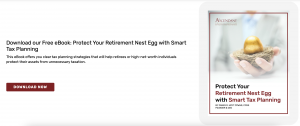Investing for retirement doesn’t need to be overly complicated. There’s no magic formula for asset allocation and no secret stock-picking strategy that guarantees above-average returns. But retirement investing does require a bit of planning.
You’ll need to set goals, select investment vehicles, and (most importantly) have the patience to let your plan unfurl. No two retirement portfolios will look exactly alike since risk tolerance and long-term goals vary from person to person. But if you’re looking for a place to get started, here are some important techniques that you should consider when investing for retirement.
Plan for the Long Haul
Retirement planning is a decades-long process. Most people begin when they still have decades of work ahead of them, but this is the smart way to approach it. Even though retirement is far from the minds of 20-somethings entering the workforce, that’s the ideal time to start planning because time is on your side. Don’t Wait!
In order to maximize your long-term returns, you’ll need to have a multi-decade time horizon. When you’re young, it’s not so much what you buy, but when you buy it. Starting a retirement portfolio in your 20s gives you lots of time to recover from mistakes. Plus, the earlier you begin, the less money you’ll need to sock away each year as compound interest begins to work its magic.
Place Assets in the Most Efficient Vehicles
Not all securities are created equal. Some are designed to return annual income to their holders, like bonds or high dividend stocks. Some are designed for massive growth at the expense of profits, such as the big tech stocks like Amazon and Alphabet.
Retirement planners also have access to several tax-sheltered investment accounts like 401(k) accounts and IRAs. The different tax statuses of these accounts should dictate which assets flow into them. For example, let’s assume you have a 401(k) account and a Roth IRA. The 401(k) assets are taxed at withdrawal, but the Roth IRA assets are not since taxes on Roth contributions are made upfront.
Since contributions are capped on both types of accounts, you’ll need to park your assets in the most tax-efficient vehicle. Bonds and dividend-paying stocks should go in the Roth since coupon and dividend payments are taxed as income.
But a Roth IRA offers tax-free growth, so your coupons and dividends won’t be taxed. Then keep your growth stocks in the 401(k) since any asset held over 1 year will be taxed at capital gains level, which is much lower than the income level.
Utilize Dollar Cost Averaging
Time in the market > timing the market. The best strategy for long-term investment isn’t attempting to time market tops and bottoms, but consistently putting money into the market at the same time each month. By investing at regular intervals, retirement savers will remove emotions from the game and benefit from both bear and bull markets.
For example, let’s say you plan to max out your 401(k) in 2021, which means you can contribute a total of $19,500. But you don’t have that $19,500 just sitting under a mattress in a lump sum. Since you’re using a 401(k), your funds will be automatically withdrawn pre-tax from your paycheck and inserted into the account (either weekly, bi-weekly, or monthly, depending on how you get paid).
By putting the same amount of cash to work every two weeks, you’ll have 24 different buying opportunities in the market every year. Stocks might be up, down, or flat when you contribute, but you won’t have to worry about market timing since you’ll be investing the same amount whether it’s a market top or a market bottom.
Reassess Risk Tolerances
Retirement planning isn’t about committing to a single investment strategy. As your working years begin to wind down, a portfolio with 90% stocks might be more than aggressive – it could be flat-out reckless. As we get older, we must revisit our risk tolerance and make sure our portfolios are properly adjusted.
When you begin working in your 20s and even into your 30s, a retirement portfolio heavily tilted toward stocks is a smart plan. Young people have plenty of time to recoup losses, plus decades of human capital at their disposal. Lose 30% in a bear market? No worries, you have time to recover and can add more funds to your portfolio with earned income.
But what about a 50 or 60 year- old? The risk tolerance equation changes here not only because your career is on the back nine, but also because you don’t have the human capital or time to make up for large losses. At some point, the goalposts move from capital appreciation to capital preservation. Risk should be embraced in your younger years, but carefully managed in your older years.
Plan a Post-Retirement Portfolio
Building a nest egg with a meticulously tended stock portfolio requires a particular prowess. But efficiently spending down that nest egg in retirement? That’s an entirely different skill and one that often clashes with our retirement saving instincts. Capital preservation is more crucial at this stage, but that doesn’t mean you need to exit the markets entirely.
A post-retirement portfolio will naturally be less aggressive than previous iterations, but capital can be separated into different ‘buckets’ based on risk. You’ll want at least a few years of savings in liquid form, like a savings or money market account. This bucket can be tapped for monthly expenses and any emergencies that might pop up.
The next bucket should consist of income-producing securities like government and corporate bonds, long-term CDs, and perhaps some high dividend blue-chip stock funds (if you have the stomach for risk).
Finally, you’ll have riskier investments like stocks, ETFs, and mutual funds in a third bucket. If the first two buckets are properly maintained, this equity bucket won’t need to be tapped unexpectedly, so you can move funds out during market highs and not have to worry about selling shares into a bear market. This strategy allows you to stay invested in stocks well into your retirement without stressing over market crashes.
Ascendant Financial Solutions, Inc. is an independent SEC Registered Investment Advisory firm serving clients in the Flagstaff and Phoenix, Arizona areas. With more than thirty years of experience in the financial industry, we partner with families, business owners, and retirees to ascend to greater financial heights on their journey to financial freedom. No matter how complex your financial goals are, our team will rise to the challenge to help you meet your goal.


